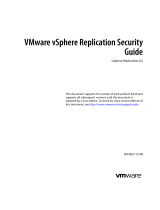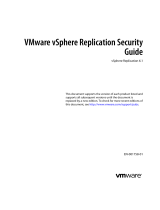
Contents
1 VMware Site Recovery Manager overview.......................................................................4
2 New features and changes.............................................................................................. 6
3 System requirements.......................................................................................................7
4 Storage recommendations.............................................................................................. 8
NVSRAM settings.............................................................................................................................................................. 8
5 Licensing requirements................................................................................................... 9
6 Conguration procedures.............................................................................................. 10
7 Installation procedure..................................................................................................... 11
Conguring storage arrays................................................................................................................................................ 12
Conguring protection groups...........................................................................................................................................14
Conguring recovery plans................................................................................................................................................15
8 Upgrade procedure........................................................................................................ 17
9 Troubleshooting information.......................................................................................... 18
10 Flow diagram................................................................................................................ 21
discoverArrays...................................................................................................................................................................21
discoverLUNs....................................................................................................................................................................21
testFailover (Start)...........................................................................................................................................................22
testFailover (Stop)........................................................................................................................................................... 22
SyncOnce.........................................................................................................................................................................23
Failover.............................................................................................................................................................................23
11 Getting help..................................................................................................................24
Documentation matrix...................................................................................................................................................... 24
Dell documentation.....................................................................................................................................................24
VMware documentation............................................................................................................................................. 24
Contacting Dell................................................................................................................................................................. 24
Locating your system Service Tag.................................................................................................................................... 25
3





















